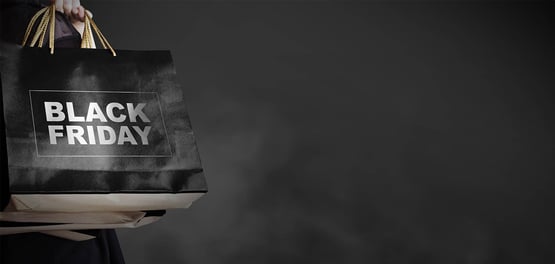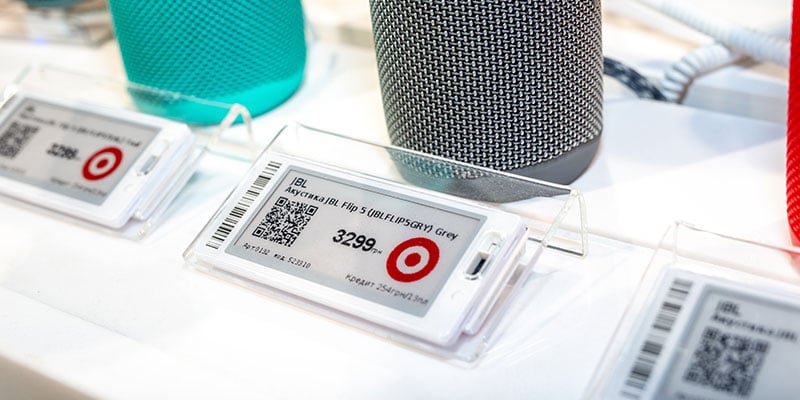Will Black Friday end in a Blue Monday for retailers?

Black Friday will be a test case for retailers in terms of their ability to fulfil demand in a time of supply chain disruption, and also for customers in terms of whether they will put up with poor availability or shop elsewhere.
Retailers are doing all they can to deal with shortages due to disruptions in the supply chain. Some larger companies have taken control of their own supply chain by bypassing many of the supply chain intermediaries and buying capacity direct.
Others are thinking further ahead by acquiring their own logistics capability, so that they will no longer fall prey to disruptions, not of their making.
In fact, there is no end to the ingenuity retailers have employed to ensure that goods are available on Black Friday and on into Christmas.
However, ingenuity at the back-end is not always followed up at the front-end, on the shelf; even companies with full inventories are not always getting them onto the shelf, leading to gaps.
Shelf gaps
It was ever thus, and consumers have got used to shelf gaps, ever since the early days of Covid they went into a spiral of panic buying. Now, as gaps widen, it is often assumed that a particular product is missing because it is subject to a serious shortage due to non-production or simply could not be moved from the original destination.
However, this awareness does not translate into acceptance but frustration, because, post-Covid, they are ready to buy, particularly goods that were in short supply during lockdown.
A bumper Christmas is predicted for 2021 and it all kicks off with Black Friday, but if stock is not available, retailers lose the sale – and risk losing loyalty at the same time. And the consumer can see what’s going on in store.
Once the retailer starts to get a reputation for poor availability, the customer will go elsewhere permanently.
In 2021 research of 18,000 European consumers in our latest report, showed 70% said they are more likely to shop with supermarkets who have good availability of product on shelf, while 59% are less likely to continue shopping with a supermarket brand / grocery retailer where stock replenishment is often poor.

Inconsistent cross-channel pricing
Moreover, consumers are voting with their feet not just because of availability; 69% of European shoppers say cross-channel pricing inconsistency frustrates them and 59% would shop less with retailers who have inconsistent pricing on- and off-line, and 70% would become less loyal to retailers who didn’t have pricing matched across on-and off-line channels.
And 72% say their trust of a retailer is damaged when they notice pricing inconsistencies across channels; 31% said they’ve found online pricing to be cheaper than in-store items from the same retailer, while just 16% said the opposite was true, with in-store prices cheaper than those available from the same retailer online.
35% found items that they’d checked online that were ‘available’ in-store were then out of stock when they reached the aisle.
This is simply a consumer that is not prepared to put up with any friction in their retail life. They are more price-sensitive than ever (46%), while a further, 48% are more promotions conscious, saying they are now more likely to seek out promotional offers on products to make their money go further.
And while some of this behaviour is reverting as the pandemic eases, many consumers are sticking to their newly acquired habits and this has raised their expectations as to what needs to change in store.
More product information on the shelf
64% would like to have more access to product information in addition to pricing at the shelf edge, while 47% of European shoppers have been put off buying a complex or considered purchase as there hasn’t been enough product information available in the aisle.
Almost over a third (35%) say they’ve been put off buying a product as the information on the shelf-edge in-store has been inconsistent with online – but there is a fine balance to be struck.
This is the new consumers going into Black Friday and on into Christmas. The moment of truth of them is the shelf edge so the call goes out to retailers to take a less tactical approach to optimisation and start to integrate the multiple technologies needed to present the perfect offer.
This is about being able to act on advanced forecasting decisions to dynamically manage prices at the shelf edge, respond immediately to gaps, assort and promote against true demand to raise sales and reduce waste, pick more rapidly for online orders to avoid interrupting the customer and also to avoid cannibalising stock.
Published on November 25th, 2021